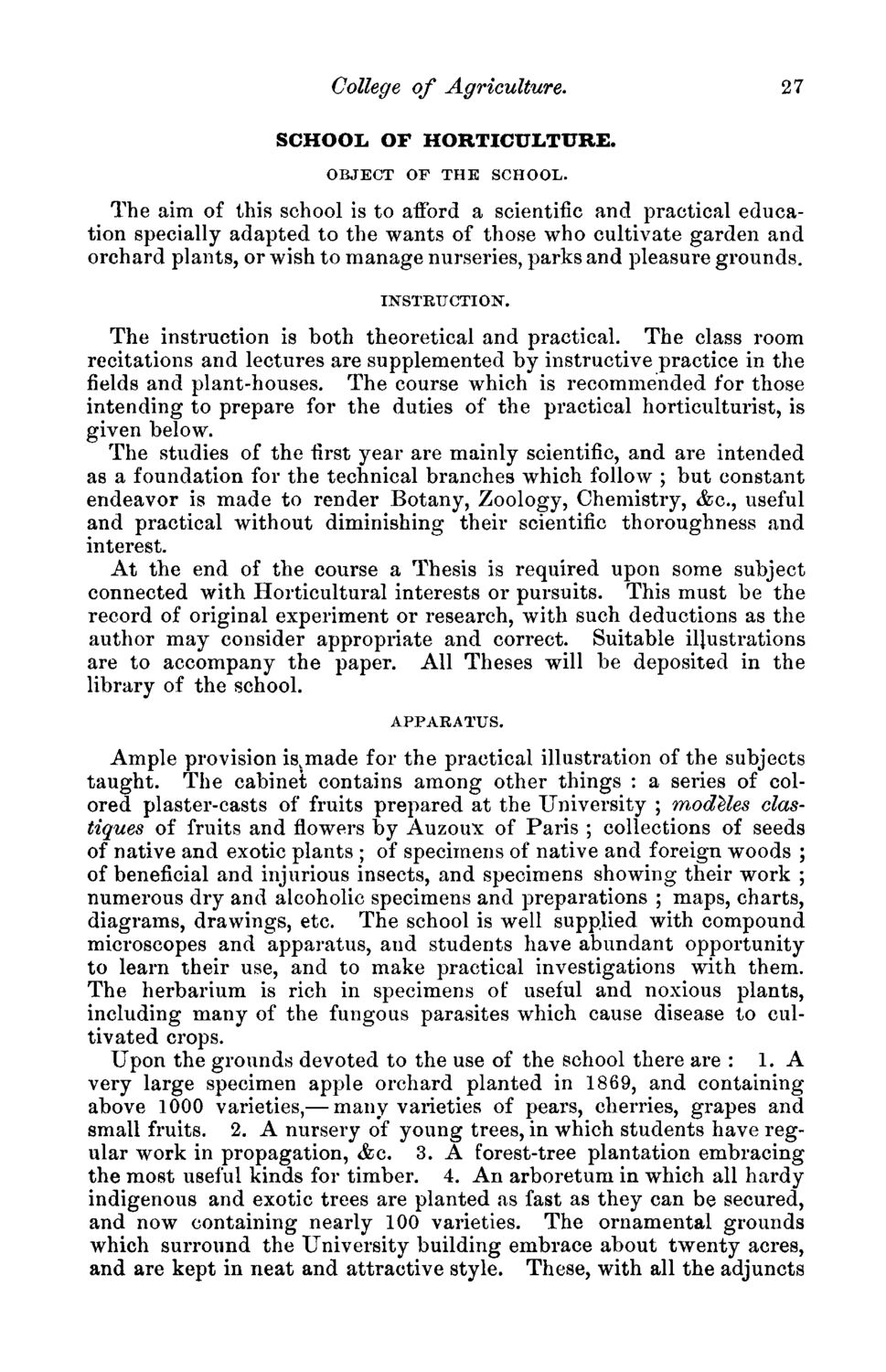| |
| |
Caption: Course Catalog - 1876-1877
This is a reduced-resolution page image for fast online browsing.

EXTRACTED TEXT FROM PAGE:
College of Agriculture. SCHOOL OF HORTICULTURE. OBJECT OF THE SCHOOL. 27 The aim of this school is to afford a scientific and practical education specially adapted to the wants of those who cultivate garden and orchard plants, or wish to manage nurseries, parks and pleasure grounds. INSTRUCTION. The instruction is both theoretical and practical. The class room recitations and lectures are supplemented by instructive practice in the fields and plant-houses. The course which is recommended for those intending to prepare for the duties of the practical horticulturist, is given below. The studies of the first year are mainly scientific, and are intended as a foundation for the technical branches which follow ; but constant endeavor is made to render Botany, Zoology, Chemistry, &c, useful and practical without diminishing their scientific thoroughness and interest. At the end of the course a Thesis is required upon some subject connected with Horticultural interests or pursuits. This must be the record of original experiment or research, with such deductions as the author may consider appropriate and correct. Suitable illustrations are to accompany the paper. All Theses will be deposited in the library of the school. APPARATUS. Ample provision is^made for the practical illustration of the subjects taught. The cabinet contains among other things : a series of colored plaster-casts of fruits prepared at the University ; modeles clastiques of fruits and flowers by Auzoux of Paris ; collections of seeds of native and exotic plants ; of specimens of native and foreign woods ; of beneficial and injurious insects, and specimens showing their work ; numerous dry and alcoholic specimens and preparations ; maps, charts, diagrams, drawings, etc. The school is well supplied with compound microscopes and apparatus, and students have abundant opportunity to learn their use, and to make practical investigations with them. The herbarium is rich in specimens of useful and noxious plants, including many of the fungous parasites which cause disease to cultivated crops. Upon the grounds devoted to the use of the school there are : 1. A very large specimen apple orchard planted in 1869, and containing above 1000 varieties,— many varieties of pears, cherries, grapes and small fruits. 2. A nursery of young trees, in which students have regular work in propagation, &c. 3. A forest-tree plantation embracing the most useful kinds for timber. 4. An arboretum in which all hardy indigenous and exotic trees are planted as fast as they can be secured, and now containing nearly 100 varieties. The ornamental grounds which surround the University building embrace about twenty acres, and are kept in neat and attractive style. These, with all the adjuncts
| |